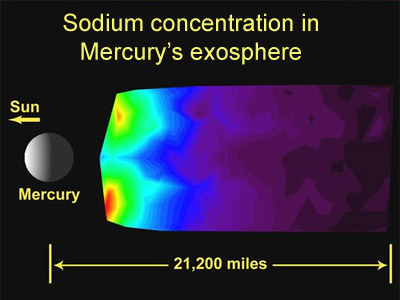MESSENGER will give us much better images of Mercury than this one!
Click on image for full size
Courtesy of NASA
MESSENGER
The MErcury Surface Space ENvironment, GEochemistry Ranging mission Mercury. The Mariner 10 spacecraft last visited Mercury in 1975. Since then, scientists have been interested in Mercury's atmosphere, surface and core. The MESSENGER spacecraft is scheduled to launch in 2004 and will begin its orbit around the tiny planet in 2009.
MESSENGER will study a number of things during its journey. Scientists are hoping to learn more about the planet's thin atmosphere, the origin of its high density, the composition and structure of its crust and the mystery behind the polar caps. MESSENGER will first make two flybys of Mercury to gain velocity and study the atmosphere before beginning its orbit.
MESSENGER is part of the Discovery Program, an alternative to the high cost missions once used by NASA. The mission is estimated to cost $286 million and is led by John Hopkins University.
You might also be interested in:

Mercury has very little atmosphere. The planet's small size means that its gravity is too weak to hold down a normal atmosphere. There is a very thin atmosphere around the planet. Mercury's thin atmosphere
...more
The Cassini probe began its journey to Saturn on October 15, 1997. It flew by Earth in August, 1999, before heading towards the distant planet. Cassini passed Jupiter in 2000 and then burned towards its
...more
The MErcury Surface Space ENvironment, GEochemistry Ranging mission
...more










